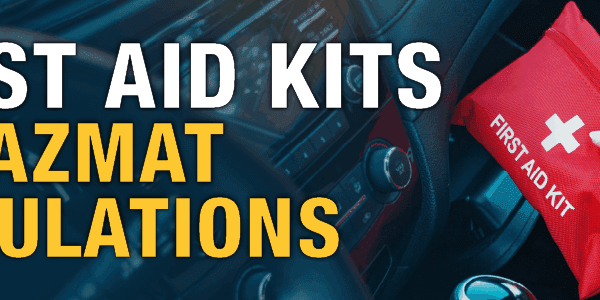
Well, it’s fall, and that means pumpkin spice has taken over the coffee shop, people are putting on sweaters before leaving the house, and we prepare for the next edition of the IATA Dangerous Goods Regulations (IATA DGR) for transporting dangerous goods by air. But before you nod and murmur “same as it ever was,” there’s something new this year. No, not a hot new flavor for the season or a new fashion trend, but a new electronic version of the IATA book.
Now, I’ve come during the pandemic to enjoy using the electronic DGR. Like its hard-copy brother, it was easy to install and navigate, and came with some neat features, such as fillable PDFs for Shipper’s Declarations for Dangerous Goods and checklists. The searchable List of Dangerous Goods was a nice feature, too, as well as a well-thought-out hyperlink system.
So, I was a little worried when it was announced this year that IATA was switching to a new system for the e-book version. Would it still be easy and accessible? Would it fall short of previous versions, or be even better?
So, in the spirit of all those unboxing videos on YouTube, here’s my experience with the 2023 e-book of the IATA DGR.
Step 1 – Gaining Access
The purchasing manager has sent me a nice e-mail from IATA regarding my new book. It includes the statement “To access your IATA publication you will need to log in to a Bookshelf account and use the redeem code.“ This is totally new, but reflects IATA’s switch to a more web-based system.
So, I try the link to “Create an Account.” It goes smoothly. Within a few minutes of my creating an account, I get a confirmatory e-mail, and it looks like we’re good to go. I put in my activation code and presto, there’s a link to the DGR. I’m rather surprised at how simple that is. Where are the blood, sweat and panicked phone calls for tech support?
Step 2 – Delving Deeper
I click to open the e-Reader. Oh no, a pop-up! But not a third-party ad. This one says “Read Offline with the Native Apps! Read on the go with our iOS and Android apps! Login instantly without email or password using our brand new QR code login!” Apparently, the writer is not concerned that too many exclamation marks make you look manic, but I happily press the “Learn More” button.
A page shows up with the promised QR code. I scan it, but my phone says I must first download the “Bookshelf” app, which is free. After struggling to remember my password, I see the download commence. When finished, it signs me in, and a very skinny column appears with the introduction to the DGR. A menu on the top left takes me to the table of contents. Not that I’d like to read the entire manual this way, but I’m sure this will be helpful for quick checks while on the road.
Hmm. Back on the laptop screen, it says “You can also download apps for desktop!” Still with the slightly caffeinated punctuation, but intriguing. I click on “Windows” and a popup appears saying “launching app on your device” with “install” as the only choice. Not so fast, we’ve barely been introduced! But I’ll live dangerously and try an “install” without first clearly knowing what I’m installing.
Oh, good. It wasn’t taking me to some shady site but to the MicroSoft App Store, where I’m prompted to download “VitalSource Bookshelf.” This is apparently similar to the app I needed on my phone. It promises that I can “[u]se Bookshelf to enjoy a digital-first, comprehensive learning experience from the convenience of your Windows computer. Access all of your VitalSource textbooks and study anytime, anywhere.” I have to give them my email and a password, but it takes me to a screen where it asks me to download the book, while confusingly telling me the “book is not present.”
OK, that just meant I didn’t have the book on my device yet. It does download surprisingly fast. So, if I’m away from the office and internet access is a problem, I’ll be covered.
Step 3 – Under the Hood
Most of my comments following will be on the online version.
The Table of Contents is easy to use. Just click on the section header, and there are links to each main paragraph within. An arrow icon can expand or close the contents of each section. One of the promised improvements is you can search within the page like any web page.
Can I copy and paste text directly, I wonder? Apparently not, because when I highlight and right-click, a little box appears with my options, none of which are copying the text. However, I can highlight my section in “Groovy Green” or “Mellow Yellow.” Someone is having sixties flashbacks. Other options are to look it up in Wikipedia, create a “flashcard” or “read aloud.”
I vote for “Create Flashcard,” since this is a new feature. I saved the definition of “Consolidated consignment” and it appears as a neat little card. It gives me an option for “Study” and when I click that button the definition comes up on its own screen, allowing me to choose “I know it” or “I don’t know it.” This would likely be more useful for an academic textbook, but I’ll keep it in mind for training.
Other features that apply to general text include changing the default text size, the default font, and various shadings of the screen. I opt for the regular “Day” configuration, but I could have a dark screen or a light shading if it suits my vision more.
An interesting option is “Sharing.” While I haven’t investigated it fully, it appears I can “follow” other people who own the DGR online and “share highlights” with them. While this might not seem too useful for a regulatory book, I can see it being very useful for college students studying a textbook.
Step 4 – The List of Dangerous Goods
All this is very well and good. But what about the most crucial part of the DGR – the List of Dangerous Goods, section 4.2? What about those wonderful features that let you search the table by UN number, by shipping name, even by class, packing group or special provision? I’ve come to find these essentials in the e-version that can’t be tabbed or dog-eared like a hard copy to mark important spots in the table.
At first my heart sinks. When I click on Section 4, it gives me the choice of “List of Dangerous Goods (Static)”. This would be pretty much what we see in the original blue pages of the hard copy – each entry arranged alphabetically, without any way to sort or rearrange them. But a quick look back up the table shows there’s also the choice of “List of Dangerous Goods (Dynamic).” When we open that up, I’m relieved to see that it retains the functionality of the previous edition with some even better tweaks. We can sort by any column – should you be questioned on “how many entries refer to Packing Instruction 353” you can easily look that up. And we have the same hyperlinking that can take you to Packing Instruction 353 with a single click. These are really the best parts of the electronic version, and I hope that we’ll find them in the new IMDG Code for 2023 as well.
If you get confused with all the options, there’s a “reset” button that returns the page to its original format, which is handy.
Step 5 – The Extras
The “Toolbox” section appears very similar to what we had in previous editions. There’s a fillable Shipper’s Declaration that can save your inputs in a printable PDF; checklists for various types of shipments; and a “Quick Reference” card for cargo handlers. Nothing new here, but still useful features.
One thing I haven’t been able to explore yet is how well the “Bookshelf” feature interacts with other documents such as the IMDG Code for marine shipments. But it does appear to be pretty robust, and I don’t expect any serious issues or slowdowns.
I would, if I were talking to the creators, ask a simple thing though – an automatic button on my desktop and bookmark on my browser. Without these, it takes a couple of extra steps to get back to the program.
Conclusions
So, how do I like the new format? I’ll have to give it the “So far, so good” thumbs up score. It appears to do whatever the old version did, and in some cases has introduced new usability features. The speed of access to features is great, and installation was (compared to earlier years) a relative breeze.
If you ship dangerous goods by air, you need the IATA DGR. And if you’re mobile, working from home or doing a lot of online discussion of air shipments, the e-version is the way to go. Don’t wait until the last minute – contact ICC Compliance Center here at 888-977-4834 (Canada) or 888-442-9628 (U.S.) and place an order. Questions about new aspects of the 2023 edition? Call and ask for our regulatory staff to step you through the latest updates.
Sources:
International Air Transport Association (IATA)
IATA, “What are the New Regulations and Standards in Air Cargo and Ground Handling Operations?”
Stay up to date and sign up for our newsletter!
We have all the products, services and training you need to ensure your staff is properly trained and informed.









 ICC USA
ICC USA ICC Canada
ICC Canada